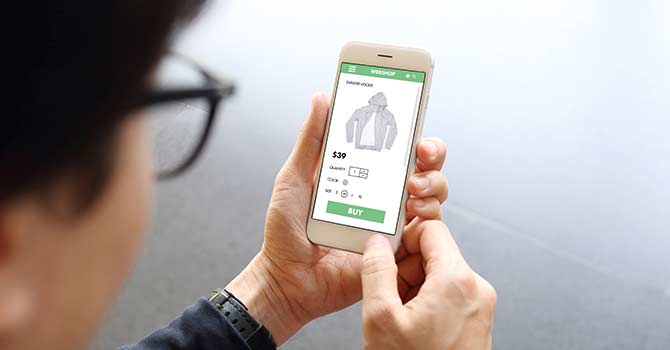In an age of advanced technology, convenience and self-service, more and more customers are turning to ecommerce businesses over their brick-and-mortar counterparts.
But that’s not to say that the physical storefront is becoming extinct. In a mutually-beneficial cycle, most in-store purchases are inspired by online searches and social media sites. Let’s take a look at a common 21st century scenario. A customer is interested in a product they’ve never tried. They search for reviews, descriptions and photos of the product online.
Once interested but not entirely convinced to buy, the customer opts to make their first-time purchase in store. Satisfied, they establish brand trust and continue to buy products from the business’s online store out of convenience. This ROPO (“research online, purchase offline”) model allows brands to appeal to the modern customer who expects both options.
Online Store Trends
Big trends have emerged in the competitive ecommerce sphere, which accounts for 10% of retail sales in the U.S.:
- Mobile Friendly Web Designs
Consider how often you pull your smartphone out to search for or buy something on the go. Your customers want to do the same. Mobile devices are our lifelines to contacts, news, information, and, today more than ever, our payment needs. Websites optimized for mobile access have become an ecommerce staple.
- Aesthetics and Social Appeal
Visual appeal is a huge factor in capturing customer attention, establishing trust and building your brand’s credibility. Businesses that invest in creative, high-quality photos and videos to make beautiful websites, and advertise products on image-focused social sites, like Pinterest and Instagram, get more exposure and see higher conversion rates.
- Fast Delivery Options
Next-day, and even same-day, delivery is beginning to take center stage as a deciding factor for customers when they’re comparing online businesses. Ecommerce denotes buying speed, convenience and efficiency—so why shouldn’t our delivery methods do the same? Online stores can save shipping addresses and billing information (with cardholder data in the form of a secure token), so it only takes one click for a repeat customer to purchase something new. When that lightning speed extends to your delivery options, you are truly able to give customers what they want.
- Personalization
Application Programming Interfaces (APIs) and webhooks allow businesses to gather information about browsers and buyers and use it to recommend products and services they are likely to enjoy. It saves them time in their product searches and puts your business at the forefront when they decide to buy.
- Automation
Automation can stem from your payment gateway, ecommerce platform (think Shopify, Magento, WooCommerce, etc.), and even your merchant service provider through recurring billing plans. Automated order processing, invoices, marketing messages, discounts, reminders—you name it—free up your precious time. And, automation produces measurable returns on investments so you can quantify how well your strategies are, or aren’t, working.
Online shopping is showing no signs of slowing. According to Statista, at this rate it is expected to grow by 246.15% globally by 2021.
Are you thinking, “This can’t possibly apply to my small business!”?
“Why should I make an online store, and at what cost?”
Or, “My online store is doing just fine as is…”?
“Just fine” might allow you to stay in business now, but scalable solutions will help your business continue thriving in the future. Keeping up with the rapid pace of technology and modern shopping habits is important for even small businesses.
Still not convinced?
Consider the simple sales-driving benefits of an online store:
- Customers can buy anytime, from anywhere
- Exponentially increases your visibility and accessibility
- Online shopping and credit cards are a recipe for impulse buying
- Saves you time and money advertising and taking orders
- Gives your business a professional and credible image
- Gives customers quick access to information and updates
- You can easily make changes
- You learn more about your customers
- Syncs with your in-store POS system and physical store operations
- Lowers operating costs
The influx of new customers and loyalty from existing ones quickly supersedes the initial investment of making the leap into ecommerce.



